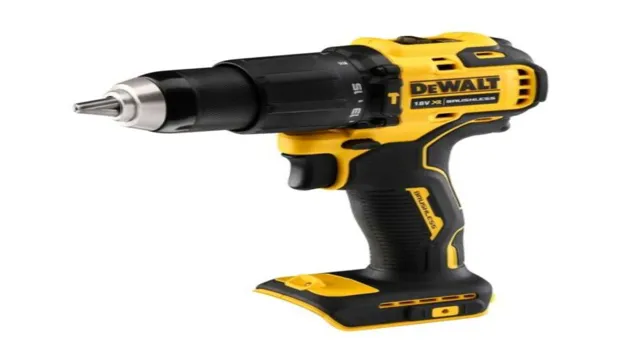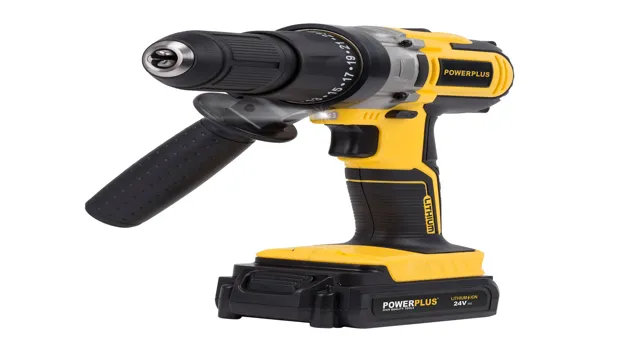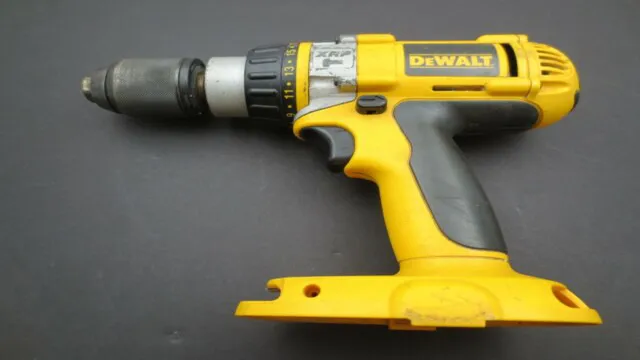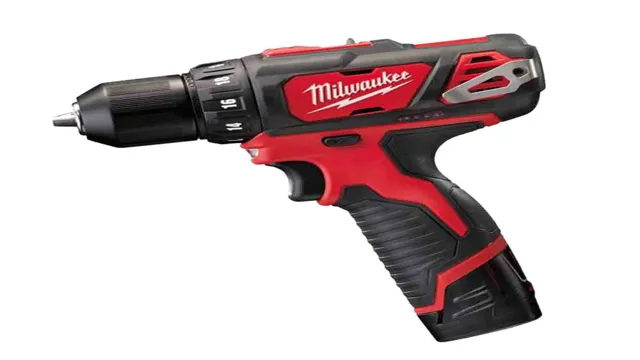What Size Cordless Power Drill Should I Buy? A Comprehensive Guide to Choose the Perfect One!

If you’re looking to add a cordless power drill to your toolbox, it can be overwhelming to choose from the different sizes available on the market. Not all drills are created equal and choosing the right size can make a big difference in the performance and ease of use. Whether it’s for DIY projects at home or on a job site, having the right size cordless power drill is essential.
In this blog post, we’ll explore the different sizes and factors to consider when choosing the right cordless drill for your needs. From the compact 12-volt to the powerful 20-volt drills, we’ve got you covered. So let’s dive in and find the perfect fit for you!
Consider Your Project Size
When it comes to buying a cordless power drill, it’s important to consider the size of your project. If you’re working on smaller DIY projects such as hanging picture frames, a 12-volt cordless drill should suffice. However, if you’re going to be taking on more significant projects such as building furniture or renovating a room, a more powerful 18-volt drill might be a better choice.
Keep in mind that a higher voltage doesn’t just provide more power, but it also means the battery will last longer. It’s important to strike a balance between power and battery life, so you’re not constantly stopping to recharge. Additionally, if you’re going to be working in tight spaces, look for a drill with a compact design that allows you to navigate easily.
Overall, consider the scale of your projects and your specific needs when purchasing a cordless power drill.
Small Projects
When planning a project, it is important to consider its size and scope. Small projects can be just as important as larger ones and require the same level of planning and attention. Whether it’s organizing a closet or redesigning a webpage, identifying the goals and resources needed is key.
It’s easy to underestimate the time and effort required for a small project, but even minor setbacks can cause complications. That’s why taking the time to plan and set achievable goals is essential. Don’t be fooled into thinking that small projects are less complex or require less effort – often the opposite is true.
By recognizing the importance of small projects and dedicating the proper resources, you’ll be able to achieve success and build momentum for future endeavors. So, next time you’re tackling a small project, don’t overlook its significance and give it the attention it deserves.

Medium Projects
When it comes to choosing a project size, it’s important to consider the scope of work involved and how much time and resources you have to devote to the project. Medium-sized projects are ideal for teams who are looking for a balanced workload that is neither too overwhelming nor too small to provide a significant challenge. These projects typically require more resources than smaller projects, but they offer a level of complexity that can be both engaging and rewarding.
That being said, it’s important to remember that every project is unique, and what works for one team may not work for another. So, whether you’re working on a website redesign, a new product launch, or a marketing campaign, make sure to assess your resources and choose a project size that aligns with your goals and capabilities. By doing so, you’ll be able to set yourself up for success and maximize your chances of achieving your objectives.
Large Projects
When embarking on a large project, it’s essential to consider its size carefully. It’s easy to underestimate the complexity of a project, leading to missed deadlines and unforeseen problems down the line. To avoid this, it’s vital to break down the overall project into smaller, more manageable tasks.
This can help ensure that each stage is appropriately executed, and any issues can be addressed promptly. By taking the time to plan and organize the project, you’re more likely to succeed in delivering a quality end product. With a large project, it’s also crucial to maintain communication with all stakeholders regularly.
Keeping everyone updated on the project’s progress can help avoid any surprises and ensure that everyone is working towards the same goal. Overall, careful planning and communication are crucial to delivering a successful large project that meets all stakeholders’ expectations.
Look at the Drill’s Voltage
If you’re wondering what size cordless power drill to buy, you’ll want to pay attention to the drill’s voltage. Higher voltage drills will have more power and be able to handle tougher tasks than lower voltage drills. For basic DIY projects around the house, a drill with a voltage of 12-18 volts should suffice.
However, if you plan on tackling heavier-duty tasks like drilling into masonry or hardwoods, you may want to invest in a drill with a higher voltage, such as a 20-24 volt drill. Keep in mind that higher voltage drills can also be heavier and more expensive, so it’s important to find the right balance for your needs and budget. Overall, understanding the voltage of the cordless drill will help you choose the right size for your particular projects.
You May Also Love:
12V Drills
Looking for a drill can be an overwhelming process, considering the various options available in the market. When it comes to choosing the right drill, the voltage is one of the crucial factors to consider. A 12V drill might not be the most potent tool out there, but it still packs a punch and can perform most of the tasks around the house.
These drills come in different sizes and weight, from compact models that are ideal for light-duty projects to larger units designed for heavy-duty drilling. If you’re a beginner or a DIY enthusiast who does not do much drilling, a 12V drill is an excellent choice. However, if you are a professional who deals with more demanding projects, you may want to consider a drill with a higher voltage.
Overall, the 12V drill is perfect for most household projects and is a great tool to have for occasional drilling tasks.
18V Drills
When it comes to choosing the right drill for your needs, one of the most important factors to consider is the drill’s voltage. The voltage of a drill determines its power and ability to handle various tasks. For instance, an 18V drill is more powerful and can handle tough drilling tasks compared to a lower voltage drill.
This means that an 18V drill can easily drill through hardwood, metal, and concrete, while a lower voltage drill may struggle. Therefore, if you need a drill for heavy-duty tasks, you should consider an 18V drill. Additionally, an 18V drill is more efficient and has a longer runtime compared to lower voltage drills.
This makes it the ideal choice for professionals or DIY enthusiasts who need to drill for an extended period. Overall, if you want a drill that can handle tough tasks, an 18V drill is the way to go.
20V Drills
When looking for a drill, one of the most important factors to consider is the voltage. The voltage of a drill refers to the amount of power it can deliver, and a 20V drill is a popular choice for both DIYers and professionals. This voltage is strong enough to handle most drilling and screwdriving tasks without being too heavy or cumbersome to use.
However, it’s still important to consider the specific needs of your project before choosing a 20V drill, as certain materials or tasks may require a higher or lower voltage. Additionally, it’s essential to choose a high-quality, reliable 20V drill to ensure that it will deliver consistent power and performance for years to come. So next time you’re in the market for a new drill, don’t overlook the importance of considering the voltage!
Consider Your Comfort and Ability
If you’re wondering about what size cordless power drill to buy, there are a few things to consider. Firstly, you want to think about your own comfort and ability. If you have small hands or struggle with heavier tools, you might want to go for a smaller and lighter drill.
On the other hand, if you’re used to working with power tools and need something with a bit more power and control, a larger drill might be a better bet. Additionally, you want to think about the types of tasks you’ll be using the drill for. If you’re just doing some light DIY around the home, a smaller drill might be all you need.
However, if you’re tackling bigger projects or working with tougher materials like masonry or metal, a larger and more powerful drill will be necessary. Ultimately, it’s important to find a drill that feels comfortable in your hands and suits your specific needs.
Handle Size and Comfort
When it comes to choosing a handle for your tool or equipment, it’s essential to consider your comfort and ability. The size and shape of the handle can significantly impact how comfortable and easy it is to use. If it’s too small, it can be challenging to grip, leading to discomfort and even injury.
On the other hand, if it’s too large, it can make it difficult to control the tool, which can also be dangerous. Therefore, finding the right size and shape is crucial. Additionally, the material that the handle is made from is also important.
A handle made from soft rubber is easy to grip and comfortable to hold, while one made from hard plastic can be uncomfortable and difficult to grip. It’s essential to choose a handle that feels good in your hand and allows you to work comfortably for extended periods. Don’t overlook the importance of handle size and comfort; it can make a significant difference in how much you enjoy using your tools.
Weight and Maneuverability
When choosing a hunting backpack, weight and maneuverability are two very important factors to consider. However, it’s equally important to think about your own comfort and ability. A backpack that’s too heavy or unwieldy can quickly become a burden, leading to discomfort and fatigue that can negatively impact your hunting experience.
On the other hand, a lightweight backpack may be easier to carry, but may not provide the necessary storage or compartments for all your gear. It’s all about finding the right balance that works for you. Consider your fitness level, the terrain you’ll be hunting in, and the length of your trip when making your decision.
A good hunting backpack should be comfortable, versatile, and functional, allowing you to focus on the hunt rather than worrying about the weight on your back. So, take the time to carefully evaluate your needs, preferences, and limitations, and choose a backpack that will help you achieve your hunting goals. Happy hunting!
Final Thoughts
If you’re wondering what size cordless power drill to buy, it really depends on the type of projects you plan on tackling. For small DIY projects or simple household repairs, a 12-volt cordless drill should suffice. However, if you’re planning on tackling heavy-duty projects like building a deck or framing a house, you may want to opt for a more powerful 18-volt drill.
It’s also important to consider the weight of the drill and how comfortable it will be to use over a long period of time. Make sure to test out a few models in-store before making a final decision. Regardless of which size you choose, investing in a cordless drill can make your DIY projects much easier and efficient.
Conclusion
After much consideration and careful analysis, the answer to the age-old question of what size cordless power drill one should buy can be summed up in one word – it depends. It depends on your individual needs, budget, and the projects you plan on tackling. Whether you’re a seasoned DIY enthusiast or a novice who is just starting to explore the world of power tools, remember that bigger is not always better.
So, consider your options wisely, and choose a cordless power drill that fits your needs like a glove. Happy drilling!”
FAQs
What factors should I consider when choosing a cordless power drill?
When choosing a cordless power drill, consider factors such as battery life, power and speed, drill bit compatibility, and overall weight and size.
What are the advantages of using a cordless power drill?
The main advantage of using a cordless power drill is the convenience of being able to use it without being tethered to a power outlet. They can also be lighter and more compact than corded drills.
What should I look for when buying replacement batteries for my cordless power drill?
When buying replacement batteries for your cordless power drill, look for batteries with high capacity, good charging time, and compatibility with your specific drill model.
How do I maintain and care for my cordless power drill?
To maintain and care for your cordless power drill, regularly clean the drill and its components, store it in a dry and safe place, and follow the manufacturer’s instructions for battery care and maintenance.
What are the limitations of a cordless power drill?
The main limitations of a cordless power drill are limited battery life, slower speed and power compared to corded drills, and the need to recharge batteries.
Can I use a cordless power drill for heavy-duty drilling or DIY projects?
Yes, cordless power drills are suitable for a range of drilling tasks, including heavy-duty drilling and DIY projects. However, consider the power and speed of the drill and the compatibility of the drill bits.
How do I choose the right drill bit for my cordless power drill?
To choose the right drill bit for your cordless power drill, consider the material you will be drilling into, the size and type of hole you need, and the compatibility of the drill bit with your drill model and chuck size.



